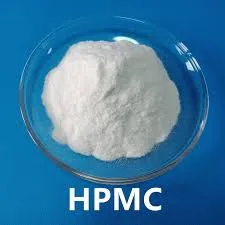
Dec . 10, 2024 10:42 Back to list
hydroxyethyl cellulose thickening mechanism
The Thickening Mechanism of Hydroxyethyl Cellulose
Hydroxyethyl cellulose (HEC) is a water-soluble polymer derived from cellulose, widely used in various industries including pharmaceuticals, food, cosmetics, and personal care products for its thickening and stabilizing properties. Its ability to modify the viscosity of aqueous solutions has made it an essential component in formulations requiring controlled flow characteristics. Understanding the thickening mechanism of HEC is crucial for optimizing its use in different applications.
Structure and Properties
HEC is created through the etherification of cellulose, which results in the introduction of hydroxyethyl groups into the cellulose backbone. This modification enhances the solubility of the polymer in water, making HEC an effective thickening agent. The molecular weight of HEC can vary, which influences its thickening efficacy and viscosity properties. High molecular weight HEC typically contributes to greater viscosity and thicker textures in formulations.
The thickening action of HEC occurs primarily due to its ability to interact with water and form hydrogen bonds. When HEC is dispersed in water, its hydroxyl groups engage in hydrogen bonding with water molecules, resulting in an increase in the network viscosity of the solution. This is fundamental to its thickening mechanism, as the more interactions that occur, the more substantial the thickening effect.
Mechanism of Thickening
The thickening mechanism of HEC can be explained through several key processes
1. Hydration and Swelling Upon contact with water, HEC particles hydrate and swell. This provides an increase in the volume of the polymer in solution, contributing to overall viscosity. The extent of swelling is influenced by the concentration of HEC, temperature, and the presence of electrolytes or other solutes.
hydroxyethyl cellulose thickening mechanism

2. Formation of a Viscous Network As HEC hydrates, it forms a three-dimensional network within the solution. This network is responsible for trapping water molecules and creating resistance to flow. The entanglement of polymer chains adds to the mechanical stability of the mixture, preventing rapid flow and resulting in the desired thickness.
3. Non-Newtonian Behavior HEC solutions exhibit non-Newtonian behavior, meaning their viscosity changes under different shear rates. This property is particularly advantageous in product formulations, allowing for easy application (low viscosity under stress) while providing a thicker consistency at rest. The pseudoplastic behavior of HEC solutions means they can be easily spread or pumped while retaining a thicker consistency when stationary.
4. Impact of pH and Ionic Strength The viscosity of HEC solutions can also be affected by pH and the presence of ions. Specific formulations might require pH adjustments to stabilize the HEC network. Similarly, the ionic strength of the solution can influence the interactions between polymer chains and water, impacting the overall viscosity.
Applications
The unique thickening mechanism of hydroxyethyl cellulose finds a myriad of applications. In the pharmaceutical industry, it is used to formulate suspensions and gels that require consistent viscosity for therapeutic delivery. In the food industry, HEC acts as a thickening agent in sauces, dressings, and dairy products, enhancing texture and mouthfeel. Moreover, in cosmetics and personal care products, HEC is employed in creams, lotions, and shampoos to improve product consistency and application experience.
Conclusion
In summary, the thickening mechanism of hydroxyethyl cellulose is critical to its role in various applications. By forming a viscous network through hydration and interaction with water, HEC enhances the texture and stability of formulations. Its unique properties, influenced by molecular weight, pH, and ionic strength, allow for a wide range of utilizations, thus making HEC an invaluable component across diverse sectors. Understanding these mechanisms enables formulators to optimize the use of HEC, ensuring products meet desired performance and sensory characteristics.
-
Versatile Hpmc Uses in Different Industries
NewsJun.19,2025
-
Redispersible Powder's Role in Enhancing Durability of Construction Products
NewsJun.19,2025
-
Hydroxyethyl Cellulose Applications Driving Green Industrial Processes
NewsJun.19,2025
-
Exploring Different Redispersible Polymer Powder
NewsJun.19,2025
-
Choosing the Right Mortar Bonding Agent
NewsJun.19,2025
-
Applications and Significance of China Hpmc in Modern Industries
NewsJun.19,2025







